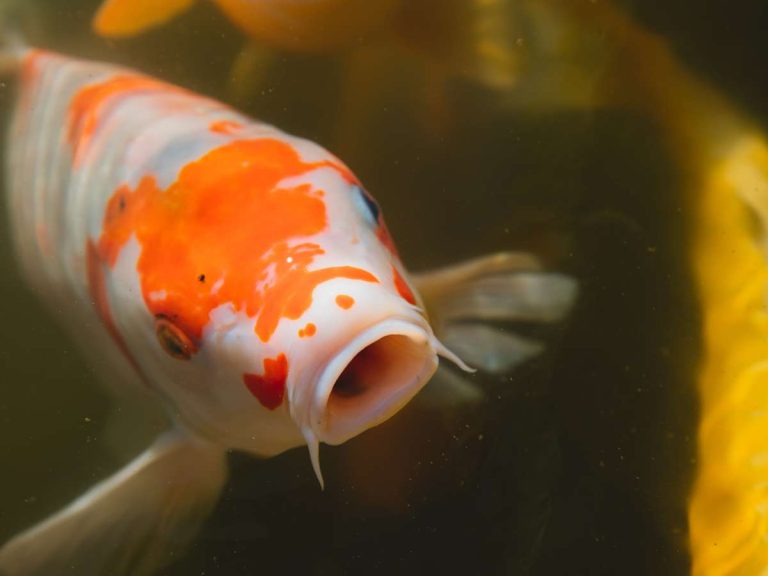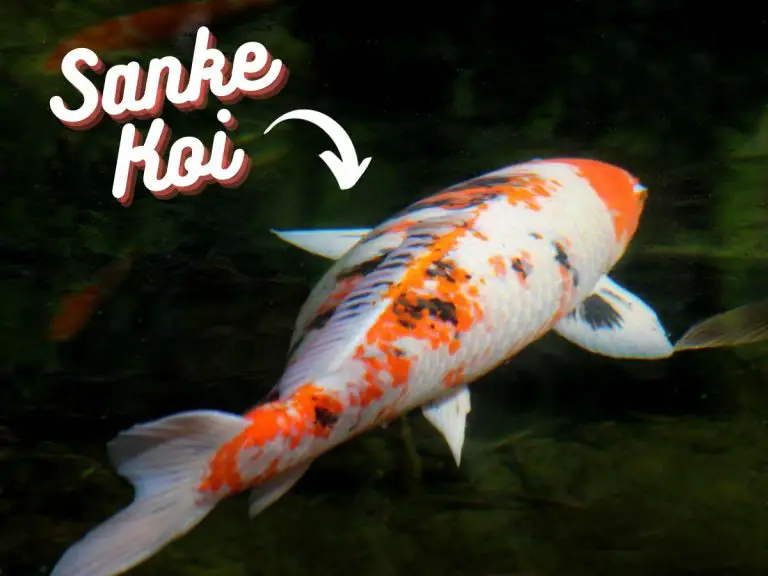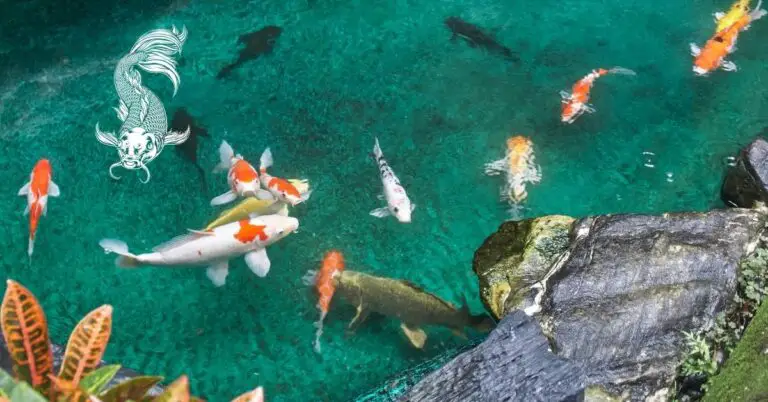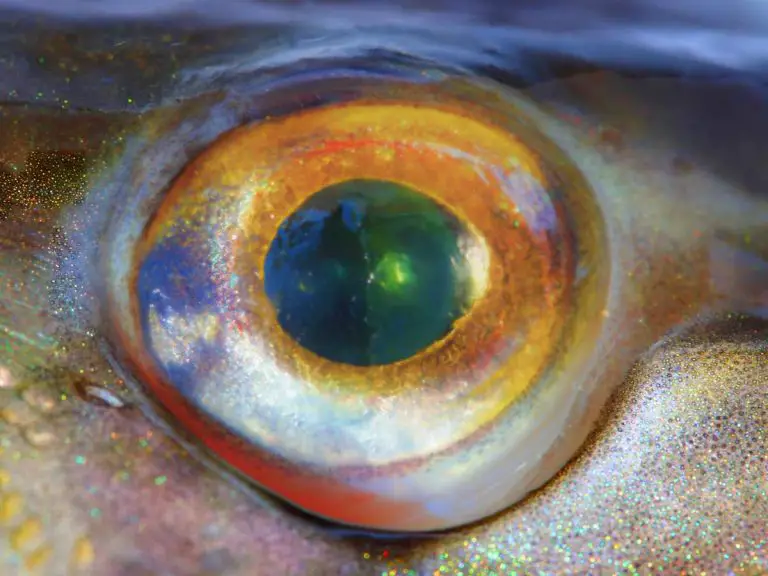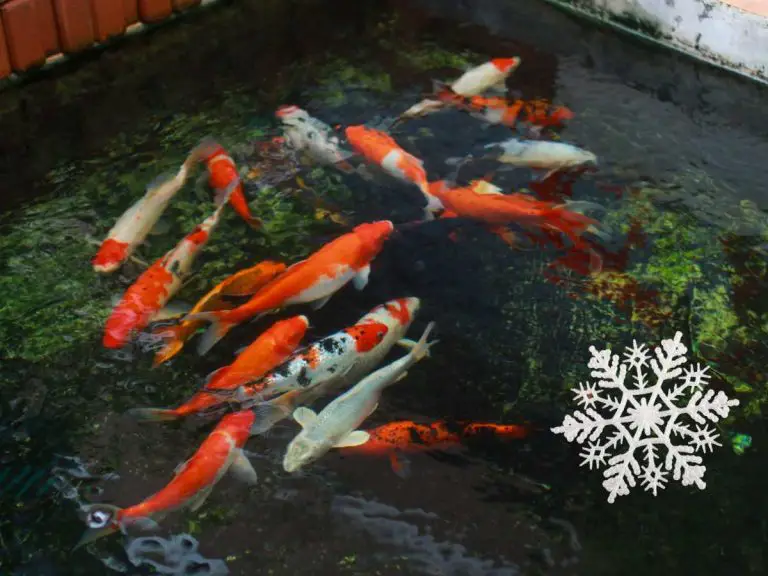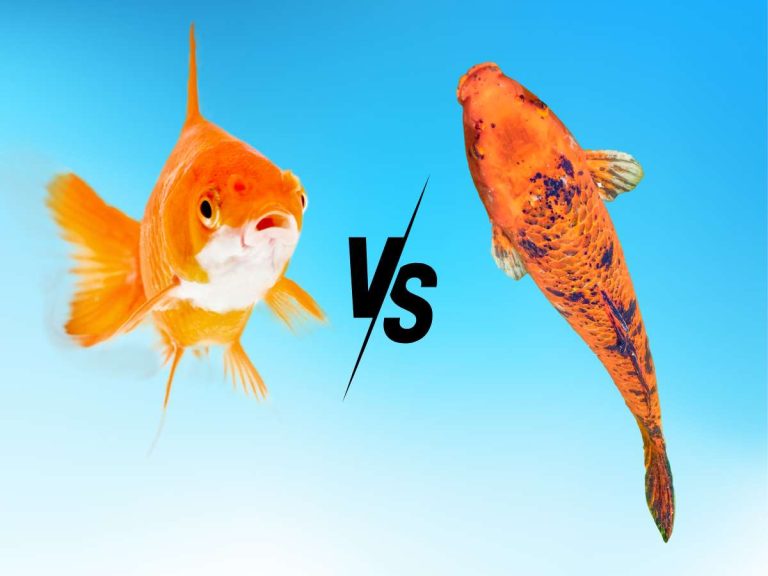Healthy Homemade Koi Food: Recipes and Guide To Make Fish Pellets At Home!
How to make homemade koi fish food? If you’ve ever wondered about creating your own koi fish food, you’ve come to the right place!
Koi fish, with their mesmerizing swirls of color and graceful dance through water, have captivated the hearts of many. But beyond the tranquil beauty they bring to any pond, lies the responsibility of ensuring their health and well-being.
One of the most intimate ways to connect with your koi fish is by preparing their meals from scratch. Crafting homemade koi food not only offers a unique opportunity to understand and cater to their dietary needs but also ensures that what they consume is fresh, wholesome, and free from unwanted additives. By taking this hands-on approach, you gain control over the ingredients, ensuring each meal is tailored to promote vibrant colors, robust health, and active fish.
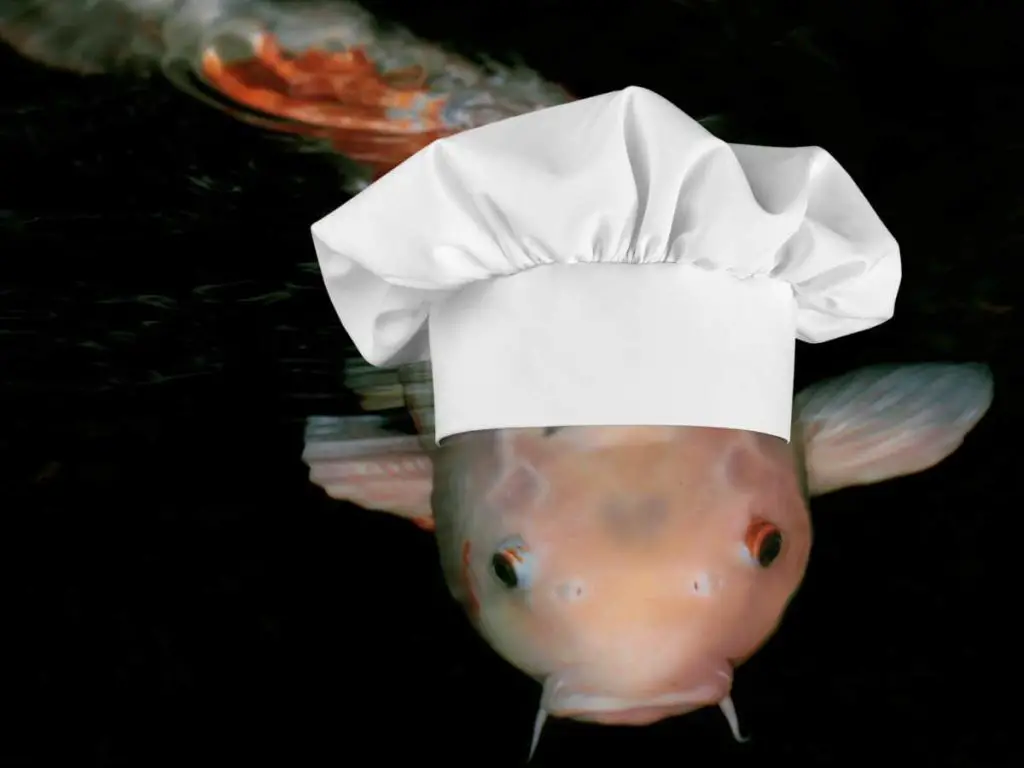
This article will serve as your go-to guide for everything you need to know about making homemade koi food. From three nutritious recipes to understanding the dietary requirements of your beloved koi, we’ve got you covered.
So, are you ready to elevate your koi keeping experience? Let’s get started!
Understanding the Nutritional Requirements for Koi Fish
Koi fish, with their vibrant colors and graceful movements, are a joy to watch. But to ensure they remain healthy and active, it’s essential to provide them with the right nutrition. The dietary needs of koi fish are multifaceted, and understanding these requirements is the first step to ensuring their well-being.
Essential Nutrients for Koi Fish
Koi fish, like all animals, have specific dietary needs that must be met to ensure optimal health and growth. These requirements include:
- Proteins: Vital for muscle development and tissue repair. They also play a role in enzyme and hormone production.
- Carbohydrates: Serve as the primary energy source for koi fish. While koi can digest certain carbohydrates, it’s essential to provide them in moderation.
- Fats: Important for energy storage and insulation. They also aid in the absorption of fat-soluble vitamins.
- Vitamins: Essential for various physiological functions, including bone health, vision, and blood clotting.
- Minerals: Play a crucial role in nerve function, water balance, and several metabolic reactions.
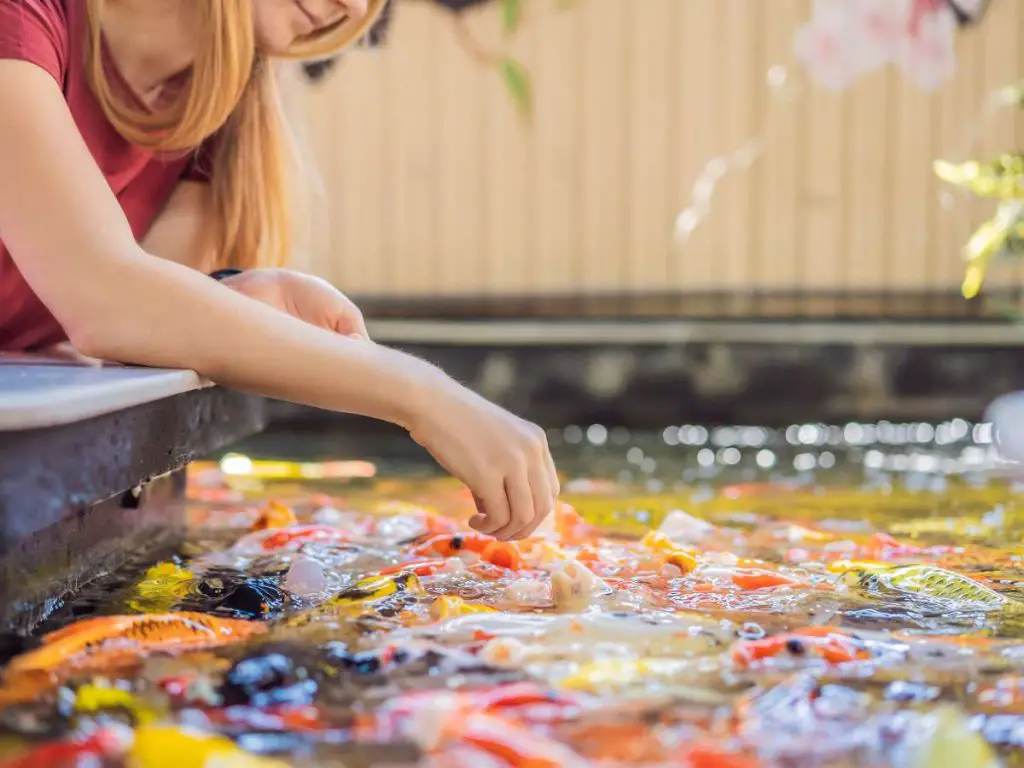
The Importance of a Balanced Diet for Koi Health and Growth
A balanced diet is not just about providing the right nutrients but also ensuring they are in the correct proportions. An imbalanced diet can lead to various health issues, including stunted growth, weakened immune systems, and even fish diseases. For instance, too much protein can strain the koi’s kidneys, while insufficient vitamins can lead to deficiencies.
A well-balanced diet also enhances the koi’s color vibrancy and overall appearance.
When to Consult a Veterinarian
While many commercial and homemade foods cater to the general nutritional needs of koi, there might be situations where specific dietary adjustments are necessary. If your koi fish show signs of distress, lethargy, discoloration, or any unusual behavior, it’s essential to consult with a veterinarian. They can provide guidance on special diets or supplements to address specific health concerns.
Reference Table: Key Nutrients and Their Functions in Koi Fish Health
| Nutrient | Function |
|---|---|
| Proteins | Muscle development, tissue repair, enzyme production |
| Carbohydrates | Primary energy source |
| Fats | Energy storage, insulation, vitamin absorption |
| Vitamins | Support various physiological functions |
| Minerals | Regulate body processes, nerve function, water balance |
By understanding the nutritional needs of your koi fish and providing them with a balanced diet, you can ensure their health, longevity, and vibrant appearance. Whether you’re a seasoned koi keeper or just starting, always prioritize the dietary well-being of these magnificent creatures.
3 Homemade Koi Fish Food Recipes
So … Are you ready to start creating homemade koi fish food that will keep your finned friends healthy and happy? Look no further! Here are some easy and delicious recipes for you to try:
Recipe 1: Basic Homemade Koi Food Pellets
This well-balanced recipe combines essential proteins from fish and shrimp meal with the nutritional benefits of soybean and wheat germ. The addition of spirulina not only enhances the vibrant colors of your koi but also provides vital nutrients. Garlic acts as a natural immune booster, while the vitamin and mineral supplements ensure your koi receive all the essential nutrients they need. It’s a wholesome choice for those looking to provide their koi with a homemade yet nutritionally rich diet.
| Ingredients | Instructions |
|---|---|
| – Fish meal | 1. Mix all the dry ingredients together in a large bowl. |
| – Soybean meal | 2. Add water gradually and mix until you achieve a dough-like consistency. |
| – Wheat germ | 3. Roll the dough into small pellets and let them dry on a baking sheet. |
| – Shrimp meal | 4. Once dry, store the pellets in an airtight container. |
| – Spirulina | |
| – Garlic | |
| – Vitamin and mineral supplements |
Recipe 2: Homemade Koi Food Using Natural Ingredients
This recipe is a delightful blend of natural ingredients that cater to the diverse dietary needs of koi fish. By incorporating both fresh fish and a variety of vegetables, it ensures a mix of proteins, vitamins, and minerals. The brown rice acts as a healthy carbohydrate source, while the fish oil provides essential omega fatty acids. What stands out about this recipe is its emphasis on using fresh, natural ingredients, which can contribute to the overall health and vitality of your koi. It’s an excellent choice for pond owners who prioritize natural nutrition for their fish.
| Ingredients | Instructions |
|---|---|
| – Fresh or frozen fish (salmon or trout) | 1. Cook the fish and remove any bones or skin. |
| – Green vegetables (spinach, peas, lettuce) | 2. Steam or boil the vegetables and carrots until they are soft. |
| – Carrots | 3. Cook the brown rice according to package instructions. |
| – Sweet potatoes | 4. Mix all the ingredients together and blend until you achieve a smooth consistency. |
| – Brown rice | 5. Divide the mixture into portions and freeze them for later use. |
| – Fish oil |
Recipe 3: DIY Gel Food for Koi Fish
This innovative gel food recipe offers a unique and fun way to feed your koi while ensuring they get all the essential nutrients. The use of gelatin provides a soft, jelly-like consistency that’s easy for koi to consume and digest. Incorporating both fish or shrimp and a selection of vegetables ensures a balanced diet rich in proteins and vitamins. The addition of garlic boosts the immune system, while the fish oil and supplements ensure a comprehensive nutritional profile. This gel food is not only nutritious but also offers an engaging feeding experience for your koi, making it a delightful choice for those looking to add variety to their koi’s diet.
| Ingredients | Instructions |
|---|---|
| – Gelatin | 1. Soak the gelatin in cold water according to package instructions. |
| – Fish or shrimp | 2. Blend the fish or shrimp, vegetables, garlic, fish oil, and supplements together. |
| – Vegetables (kale, spinach, zucchini) | 3. Heat the gelatin mixture over low heat until it dissolves. |
| – Garlic | 4. Mix the gelatin with the blended ingredients. |
| – Fish oil | 5. Pour the mixture into molds or ice cube trays and refrigerate until firm. |
| – Vitamin and mineral supplements |
More Ingredients Commonly Used in Homemade Koi Food Recipes
The following ingredients, when combined in the right proportions, can offer a balanced and nutritious diet for koi. Remember, it’s always essential to ensure that homemade koi food recipes are well-researched and provide all the necessary nutrients in the right amounts.
| Ingredient | Benefits for Koi |
|---|---|
| Fish meal | High in protein, essential amino acids, and omega-3 fatty acids. Promotes growth and muscle development. |
| Soybean meal | Plant-based protein source that aids in growth and muscle development. |
| Wheat germ | Easily digestible and rich in vitamins and minerals. Supports healthy growth and metabolism. |
| Shrimp meal | Provides essential proteins and amino acids. Enhances coloration due to natural carotenoids. |
| Spirulina | Natural color enhancer due to carotenoids. Packed with vitamins, minerals, and antioxidants. |
| Garlic | Boosts immune system, acts as a natural repellent for parasites, and stimulates appetite. |
| Fresh or frozen fish | Direct source of protein and essential fatty acids. Supports growth and overall health. |
| Green vegetables | Source of essential vitamins, minerals, and fiber. Aids in digestion and provides roughage. |
| Carrots | Rich in beta-carotene which enhances coloration. Provides essential vitamins and minerals. |
| Sweet potatoes | High in dietary fiber, vitamins, and minerals. Supports digestion and overall health. |
| Brown rice | Provides carbohydrates for energy. Contains essential B vitamins and minerals. |
| Fish oil | Rich in omega-3 fatty acids which support heart health, reduce inflammation, and improve skin and scale quality. |
| Gelatin | Acts as a binding agent in gel foods. Provides a source of collagen which supports joint health. |
Tips for Preparing and Storing Homemade Koi Food:
Creating homemade koi food can be a rewarding experience, allowing you to tailor the diet specifically to your fish’s needs. However, it’s essential to ensure that the food is prepared and stored correctly to maintain its nutritional value and prevent any health risks.
Here are some expert tips to guide you through the process of preparing and preserving your homemade koi food.
Preparation:
- Fresh Ingredients: Always use fresh ingredients. Whether it’s vegetables, fruits, or proteins, ensure they are free from mold, rot, or any signs of spoilage.
- Blanching Vegetables: Before adding vegetables to your koi food mix, consider blanching them. This process softens the vegetables, making them easier for koi to digest, and also helps in preserving essential nutrients.
- Grinding Proteins: If you’re using proteins like shrimp, krill, or insect larvae, it’s a good idea to grind or finely chop them. This ensures even distribution in the food mix and makes it easier for the koi to consume.
- Balanced Diet: Ensure a balanced mix of proteins, carbohydrates, and fats. While proteins are vital for growth, carbs provide energy, and fats help in nutrient absorption.
- Natural Color Enhancers: Consider adding natural color enhancers like spirulina or paprika. These not only enhance the vibrant colors of your koi but also provide additional nutrients.
Storage:
- Portioning: Once your koi food mix is ready, portion it into daily servings. This helps in ensuring you don’t overfeed your koi and also makes daily feeding more convenient.
- Freezing: If you’ve made a large batch, consider freezing the excess in ice cube trays. Once frozen, transfer the cubes to airtight bags. This method ensures the food remains fresh and is easy to dispense.
- Refrigeration: If you plan to use the food within a week, you can store it in the refrigerator. Ensure it’s kept in an airtight container to prevent moisture loss and contamination.
- Avoid Long-term Storage: Even when frozen, try to use homemade koi food within a month. Over time, even frozen food can lose its nutritional value.
- Thawing: Always thaw frozen koi food at room temperature. Avoid using microwaves as they can unevenly heat the food, potentially harming your koi.
- Check Before Feeding: Before feeding your koi, always check the food for any signs of spoilage or mold, especially if it has been stored for a while.
By following these preparation and storage tips, you can ensure that your homemade koi food remains fresh, nutritious, and safe for your fish.
Proper equipment and hygiene practices
When it comes to preparing homemade koi food, it’s crucial to have the right equipment and maintain proper hygiene practices. Make sure to use food-grade containers and utensils specifically designated for fish food preparation. This helps prevent contamination and ensures the safety of your koi fish.
Keep in mind that cleanliness is key. Wash your hands thoroughly before and after handling the ingredients. Additionally, regularly clean and sanitize your food preparation area to minimize the risk of bacteria or pathogens entering the food.
Preparing food in batches and storage tips
It’s a good idea to prepare homemade koi food in batches and store it properly to ensure freshness and longevity. Make sure to portion the food according to your koi’s daily requirements and avoid preparing excessive amounts that might go to waste.
When storing the food, consider using airtight containers or resealable bags to keep it safe from moisture and pests. Label each container or bag with the date of preparation to keep track of its freshness. Store the food in a cool, dry place away from direct sunlight to maintain its nutritional value.
Variety and rotation of recipes for a diverse diet
Just like us, koi fish enjoy variety in their diet. It’s important to offer them a diverse range of homemade recipes to keep their diet interesting and ensure they receive a wide range of essential nutrients.
Consider rotating between different recipes, incorporating various protein sources, vegetables, and fruits. This will not only stimulate your koi’s appetite but also provide a more balanced nutritional profile. Remember, a varied diet can contribute to the overall health and well-being of your koi fish.
Expert recommendations and tips for preparing homemade koi food
- Follow recipes from trusted sources to ensure a proper nutrient balance.
- Monitor your koi fish’s weight and adjust the portion size accordingly.
- Consult with a veterinarian or koi expert to address specific dietary concerns.
- Avoid using ingredients that are toxic or harmful to koi fish.
- Consider adding natural color enhancers like spirulina for vibrant and visually appealing fish.
- Experiment with different recipes and ingredients, but always introduce changes gradually to prevent digestive issues.
Ensuring a Balanced Diet for Your Koi Fish
Protein is a crucial component of a balanced diet for koi fish. It promotes growth, muscle development, and overall health.
When preparing homemade koi food, it’s important to include protein sources such as fish meal, shrimp, or insects. These ingredients are rich in essential amino acids that support the fish’s growth and vitality.
In addition to protein, koi fish also need vitamins and minerals for optimal health. Including vegetables and fruits in their diet is an excellent way to provide these essential nutrients.
You can add vegetables like spinach, peas, or broccoli, and fruits like oranges or watermelon. These will not only enhance the nutritional value but also add variety and taste to their meals.
Carbohydrates and fats are important energy sources for koi fish. However, it’s crucial to maintain a balance to prevent health issues like obesity. Including carbohydrates in the form of grains, such as brown rice or barley, can provide sustained energy. When it comes to fats, opt for healthier options like fish oil or vegetable oils.
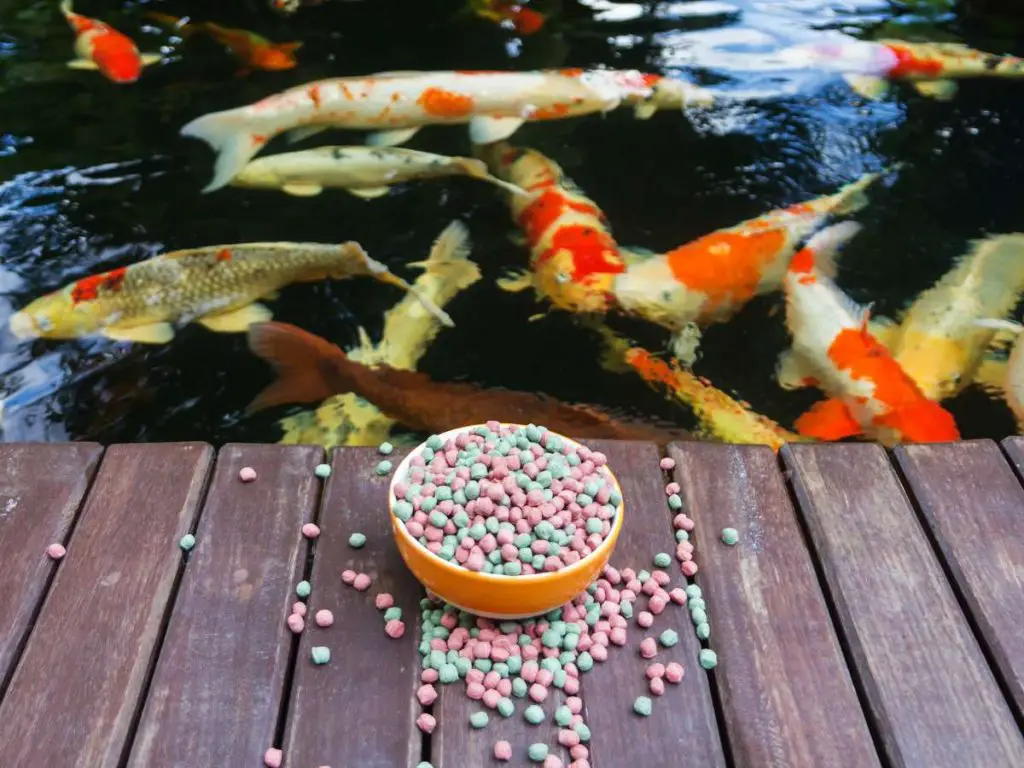
Reference table: Recommended percentage of different food components in a balanced koi fish diet
| Food Component | Percentage of Diet |
|---|---|
| Protein | 30-40% |
| Vegetables and Fruits | 20-30% |
| Carbohydrates | 20-30% |
| Fats | 5-10% |
Benefits of Homemade Koi Food
When it comes to feeding your beloved koi fish, opting for homemade food can have numerous benefits. Not only does it allow you to have control over the ingredients and quality of the food, but it can also be a cost-effective solution compared to commercial koi food.
Let’s explore the advantages of homemade koi food in more detail.
Control over ingredients and quality
One of the most significant benefits of making your own koi food is the ability to have complete control over the ingredients used. By choosing high-quality, fresh ingredients, you can ensure that your koi fish are receiving a nutritious and wholesome diet. Plus, you have the freedom to avoid any potential fillers, preservatives, or artificial additives commonly found in commercial fish food. With homemade koi food, you know exactly what your fish are eating, giving you peace of mind.
Cost-effectiveness compared to commercial koi food
Feeding a pond full of hungry koi fish can quickly become expensive when relying solely on commercial fish food. However, by making your own koi food, you can significantly reduce the cost. You can purchase ingredients in bulk, take advantage of seasonal produce, and even repurpose leftovers from your own meals. Homemade koi food not only offers financial benefits but also eliminates the worry of constantly restocking on expensive commercial food.
Potential for customization based on individual koi fish needs
Each koi fish is unique, and their nutritional needs may vary. By preparing homemade koi food, you have the flexibility to customize the recipes based on the specific dietary requirements of your fish. Whether it’s providing additional protein for growth or increasing certain vitamins and minerals, homemade food allows you to cater to your koi fish’s individual needs. This personalized approach can contribute to improved health, vibrant coloration, and overall happiness of your fish.
Potential health benefits of homemade koi food
Many koi fish enthusiasts believe that homemade food can offer additional health benefits to their beloved pets. By using fresh, natural ingredients, you can provide a diet rich in essential nutrients, vitamins, and minerals that can support various aspects of your koi fish’s well-being. From boosting immune function to promoting vibrant colors, homemade koi food is often praised for its potential positive effects on the overall health and vitality of your fish.
Risks of Homemade Koi Fish Food
When preparing homemade koi fish food, it’s important to be aware of the potential risks involved to ensure the health and well-being of your beloved koi. While homemade food can be a great option, here are some key risks to keep in mind:
- Lack of proper nutrient balance
One of the main risks of homemade koi food is the potential lack of proper nutrient balance. Koi fish require a variety of essential nutrients to thrive, including proteins, vitamins, minerals, and fats. It can be challenging to ensure that your homemade food provides all these nutrients in the right proportions. Without a balanced diet, your koi may suffer from nutritional deficiencies or other health issues.
- Risk of introducing pathogens or contaminants
Another risk is the possibility of introducing pathogens or contaminants into the homemade food. If proper hygiene practices are not followed during the preparation process, bacteria or other harmful microorganisms may contaminate the food, leading to potential illness in your koi. It’s crucial to use clean utensils, wash your hands thoroughly, and ensure the freshness and quality of the ingredients you use.
- Overfeeding and obesity concerns
Overfeeding is a common concern when it comes to homemade koi food. As loving koi owners, we often want to provide our fish with an abundance of food. However, excessive feeding can lead to obesity, which can have detrimental effects on your koi’s health. It’s crucial to follow proper portion control and monitor your koi’s weight to avoid overfeeding and maintain their optimal body condition.
Tips for mitigating risks associated with homemade koi food
To mitigate these risks and ensure the safety and well-being of your koi, here are five tips:
- Consult with an expert: Seek advice from a veterinarian or experienced koi keepers who can guide you in creating a balanced homemade diet for your koi fish.
- Research and educate yourself: Gain knowledge about the nutritional requirements of koi fish and the potential risks associated with homemade food. Understanding these factors will help you make informed decisions.
- Source high-quality ingredients: Choose fresh, high-quality ingredients and avoid using questionable or contaminated sources. This will help minimize the risk of introducing pathogens or contaminants into your koi’s diet.
- Use supplements if needed: If you’re uncertain about meeting all of your koi’s nutritional needs through homemade food alone, consider incorporating appropriate supplements recommended by experts to ensure a well-rounded diet.
- Regular health check-ups: Schedule routine check-ups with a veterinarian to monitor your koi’s health and address any concerns or deficiencies that may arise.
And remember, there’s also lots of wonderful koi fish food available these days, so don’t be afraid to explore pre-made food, too.
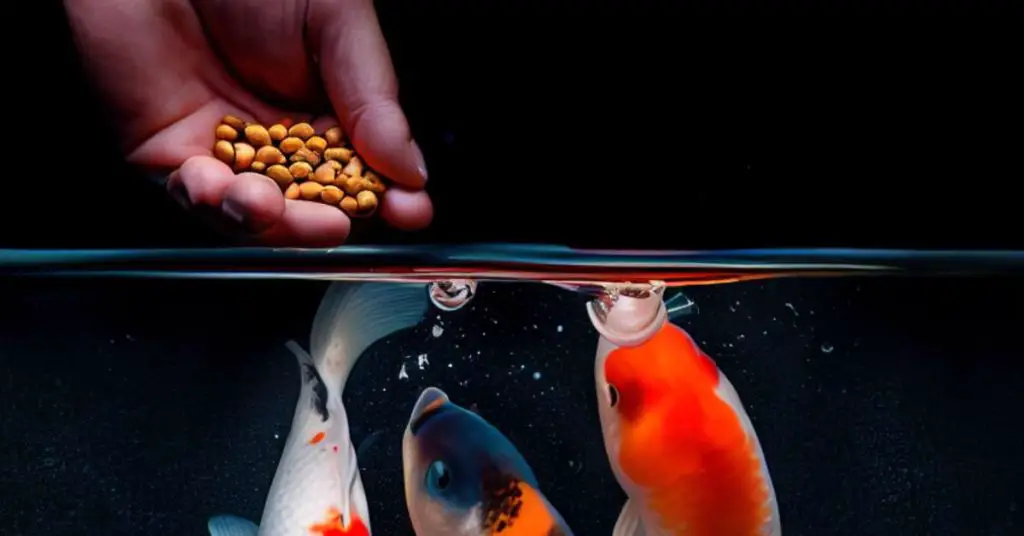
Chef’s Fish Kiss
By making your own koi fish food, you can ensure that your beautiful aquatic pets receive the best nutrition possible. You’ll have control over every ingredient that goes into their meals, and you’ll save some money too!
Remember to always prioritize the health and wellbeing of your koi fish. They rely on you to provide them with a balanced and nutritious diet. So, why not embark on this exciting journey of creating homemade koi food? Your koi fish will thank you for it, and you’ll enjoy the rewards of seeing them thrive and flourish in your pond.
Related Questions
Can I feed my koi fish only homemade food?
Absolutely! Homemade koi fish food can provide a balanced and healthy diet for your koi fish. However, it is essential to ensure that the homemade food meets all the nutritional requirements of your koi fish. It is recommended to consult a veterinarian or an expert in koi nutrition to ensure that your homemade food is providing all the necessary nutrients in the right proportions.
Can I incorporate commercial koi fish food with homemade food?
Yes, you can combine commercial koi fish food with homemade food. This can provide a well-rounded diet for your koi fish. However, it is important to make sure that both the commercial and homemade foods are of high quality and meet the nutritional needs of your koi fish. Consult with a veterinarian or a koi nutrition expert to determine the right proportions and feeding schedule for a mix of commercial and homemade food.

